A Complete Guide to DnD Vampires: Lore, Stats, and Role Play
By Riley Rath
Title Image by Antonio J. Manzanedo for La Marca de Este
Whelp... October is just around the corner... which means Dungeon Masters everywhere are preparing their Halloween one shots. Spooky frights of ghosts, ghouls, and of course...
VAMPIRES.
And if ever a DnD monster was in need of a complete guide, it is DnD vampires.
No only have they been featured in hundreds of stories, with origins in ancient Babylon, their stat block takes up an entire page of the monster manual. In other words, these 5e monsters are LAYERED, and it is easy to either get lost in the overwhelming lore or just revert to stereotype.
So if you want a kick ass true vampire your players will never forget that ISN'T just Strahd with a different name, then read on!
We'll survey the development of vampire lore through history and pop culture and then get into Forgotten Realms lore. Then we'll discuss aaaaaaaall their different abilities and regional effects. Finally, this post will provide ideas on how you can role play a DnD vampire so that they are not only iconic, but one of the best monsters your players have ever faced.
Table of Contents
- The Origin and Evolution of the Vampire Monster
- European Folklore
- Literature and Pop Culture
- DnD Vampires Specifically (Forgotten Realms Lore)
- The DnD Vampire Stat Block
- Combat Strategies for Dnd Vampires
- Other Types of Vampires in DnD
- Vampire Spawn
- Dhampir
- Vampire Lord
- Cool 3rd Party Content
- Symbolism and Modern Inspiration
- Blood
- Role-Playing a DnD Vampire
- Conclusion: FAQ

The Origin and Evolution of the Vampire Monster
To find the precursors to the modern vampires we know and love, we have to go waaaaaaaaaaaaaaaaaay back to Mesopotamia, to ancient Babylon...
Now you might think: "That's thousands of years ago... how could they possibly have anything remotely relatable to Dracula?"
Well... the demon "Lilith" drank the blood of babies...
That close enough to the start of a vampire?
Now granted, that interpretation came from the Hebrews, who were banned from drinking blood. But even Sumer lore speaks of her as an infertile maiden/harlot with bird feet that coveted a lover and drank baby blood.
Ancient India has another vampire-parallel monster, the Betal, an undead creature which hung upside down around cemeteries.

Undead Vampires in European Folklore
The 17th century is when vampire myths began to explode in popularity/infamy. They also transformed into a new form of evil. They were nothing like the fair-speaking and well-dressed aristocrats of popular imagination, but they did take on two traits recognizable to modern minds: 1) being undead and 2) being sexual.
They were most prominent in Slavic and gypsy circles (i.e. Transylvania), where the vampires transformed from straight up demon to a corpse possessed by an evil spirit, which could be passed on by biting. A particularly developed folklore was in the Slavic south, which detailed how a vampire was developed slowly over a period of 40 days of feeding on the blood of the living. "Verified" vampire stories, like those of Petar Blagojevich in Serbia, tell of a dead man rising from the grave site, asking his son for food, and then killing him (with great loss of blood) when his son refused.
The only other thing vampires liked more than killing was copulating. Accounts tell of digging up suspected vampires to see them with a perpetual erection (no joke). Legends say they would return to their widows to sleep with them at night. Strangely, their sexual unions could be fruitful, producing either more vampires or vampire hunters.
These stories may seem silly to us now, but at the time they caused widespread PANIC. People had vampire hunting kits. They were digging up graves to stab them with a stake. They were holding trails for suspected vampires. For a whole generation, people barely cared about dragons, giants, and goblins... but were OBSESSED with vampires.
In fact, it got so out of control that in the 18th century Maria Theresa of Austria (but in all practicality the Holy Roman Empress) had to send out Enlightenment scientists to debunk vampire hysteria, and even publish decrees forbidden the digging up of bodies and desecration of graves!

Vampires in Literature and Pop Culture
By the 19th century, vampires began to appear in Victorian literature. They took on a new life—or should I say "unlife"?—that went beyond the demonic.
John Polidori wrote The Vampyre, which introduced us to Lord Ruthven: moody, aristocratic, and attractive. Lord Ruthven charms a gentleman (Aubrey) at a party and convinces him to join him on his travels only to not only kill Aubrey's lover, but ALSO Aubrey's sister, and Aubrey goes insane and dies himself. BRUTAL.
Then came Bram Stoker, who really changed the vampire story with Dracula. He gave us the famous image of the undead vampire complete with Transylvanian castles, flowing capes, and being hunted by Van Helsing. It became wildly popular and remains one of the most famous pieces of English literature.
Fast forward to today... and vampire lore has gone CRAZY:
- Now we have punk-biker vampires, emotional and romantic vampires, Turkish-hordes-have-to-die vampires, and underground rave vampires.
- We have vampires that have their own secret wars with werewolves in British subways, future vampires that hunt the few remaining humans to farm blood, and "domesticated" vampires that blend into society eating nothing but animal blood.
- We have vampires that burn in the sun, glitter in the sun, lose powers in the sun, and are unaffected by the sun.
At this point, vampires have appeared in thousands of films, shows, games, and books. Don't quite me on that... but Dump Stat Adventures said 190 movies alone... so that's got to be at least 1,000 overall! Case and point: they are so ubiquitous that Kate Beckinsale has played both a vampire and vampire hunter in two separate vampire universes in the same decade!
Long story short, few monsters have embedded themselves in western consciousness quite like the vampire. You could argue that it is the 3rd most prominent monster, behind only dragons and giants.

© Wizards of the Coast
Vampires in the Forgotten Realms
The creators of Dungeons & Dragons took inspiration from all of these sources to create a well-rounded DnD vampire. The Forgotten Realms wiki details a vampire that matches many of the stereotypes.
- They are evil
- They have an undead nature
- They do not cast shadows
- They do not appear in mirrors
- They live in luxury and decadence
- They cannot go out in the sun
- They have canines that they can retract
- They are attractive and pale-skinned
- They retain memories from mortal life
- They can transform into a bat form
Some changes they made were:
- They are NOT deathly allergic to garlic
- They are NOT weak against holy water (just running water)
- They do not necessarily need to be invited into a building (I have conflicting info on this one)
- They cannot feel most emotions or grief
- They have predatory features
- They can transform into a mist form
- They do retain their souls
The Influence of Strahd von Zarovich
If there is a reason every DnD 5e player knows about vampires it is Strahd von Zarovich: the original vampire lord of Ravenloft.
This guy shows what it means to be a tragic, romantic, and truly ruthless villain. He is the perfect example of vampire politics, mystery, and true evil. Just ask anyone who has entered his misty land of Barovia in the epic 5e adventure Module "Curse of Strahd." They will share how unforgettable of a BBEG he is in a masterpiece of an adventure module.
He has set the bar high. Mystery, power games, and constant fight of control define vampire society in the Forgotten Realms because of him.
The DnD 5e Vampire Stat Block
Ok... enough lore... let's dig into what this 5th edition monster can do to royally screw over adventurers in their quest to defend life, liberty, and the pursuit of loot!
© Wizards of the Coast
Dnd Vampire Stats and Attributes Overview
Not going to go over the vampire form in too much detail, just a few observations:
- + to EVERY ability, and three saving throws? DnD vampires are competent AF.
- Darkvision at a whopping 120ft means, in a dark cave, he will see the adventuring party waaaaaay before they see him (but it is NOT night vision goggles... read our post about 5e darkvision here).
- Kinda low armor and hit points, especially for the higher level player characters they will face. I think that means a vampire will be strategic with abilities and avoid getting hit at all costs. Would def consider max HP (204) if the players are going in fully rested.
- Damage resistances to normal weapons, but most players will have something magical by level 9.
Abilities of 5e Vampires
Lots of monsters have a special ability or two... but very, very few have FOUR. Sure, those CR 22 and above monsters have a bunch, but almost none with CR 13 and below.
Shapechanger
DnD vampires can use an action to transform from their true form and into a bat or mist. Not sure why the vampire can do both... but... they can... so watch out.
If they are a bat, they do bat stuff; they fly 30ft per round, can't talk, can't carry stuff, etc. They be batman now.
If they are mist, they do mist stuff... but with MAGIC; they can fit through cracks in walls and occupy the space of another creature, but they also can be targeted only by magical attacks, and have ADV on all physical saving throws.
Misty Escape
This is different than Shapechanger and is a really cool feature of Dnd vampires. Long story short: they can't be killed in a combat encounter; the only way to kill them is in their coffin.
Long story short (again): when they drop to zero hit points, they do not die. Instead, they instantly turn into mist (the same mist they can turn into for Shapechanger) with 20ft of movement per round. It must return to its resting place within 2 hours. Should it arrive, the vampire resumes corporeal form, but is paralyzed for an hour until it regains 1 hp.
Players cannot do any damage to this mist, but they can contain it somehow, preventing the vampire from reaching its resting place, which in turn will kill the vampire forever.
Regeneration
At the beginning of every turn, a DnD vampire regains 20 more hit points on the condition that they are not in one of their weak environments (see section "weaknesses to exploit" below). They constantly regain life energy unless you stop them.
Spider Climb
Undead blood-sucking dudes can walk on walls and ceilings. Not the Spider Climb spell... they just get to do it. Deal with it.
Weaknesses to Exploit
Not too many monsters in the 5e monster manual have "weaknesses." Many consider it a major mistake on the part of Wizards of the Coast, as so many of their players fell in love with the Witcher III: Wild Hunt process of learning about a monster, finding its weaknesses, gearing up, laying a trap, and then finally slaying the monster. I know a lot of tables go by Pokemon rules (fire is weak to water, water weak to poison, etc.), but official rules as written, very few monsters have weaknesses that players can exploit.
The DnD vampire is a major EXCEPTION.
The 5e vampire has SO MANY weaknesses. This is almost certainly due to the volumes of lore and mass cultural awareness.
Sunlight Sensitivity
Similar to Drow, but supercharged, and it's only direct sunlight rather than bright light. Rather than providing disadvantage on just perception checks based on sight, it ALSO provides disadvantage on ALL ATTACKS AND ABILITY CHECKS (not saves). And if that wasn't enough, a vampire in sunlight also takes 20 points of radiant damage EVERY ROUND.
Now will your players ever... like EVER... fight a dnd vampire on a bright and sunny day in the middle of the summer? No... never... absolutely not. That would have to be insanely smart players who can think 12 steps ahead or a stupid, stupid vampire... both of which I have never even heard of. But looooots of clerics and wizards will have spells like Dawn or Sunbeam prepared, in which case a 5e vampire monster is F*CK$D.
Stake to the Heart
Now unlike in traditional folklore, a wooden stake does not kill a DnD vampire; rather, it gives them the paralyzed condition until it is removed. Furthermore, you need to A) stab them in the heart, and B) it needs to be while they are already incapacitated, and C) they need to be in their "resting place."
I believe the makers of the game intended this for the fortuitous moment players open a coffin and find a sleeping dnd vampire inside... so you can't use this method to solve your vampire problems by incapacitating them in battle and then just stabbing them with a wooden stake.
Forbiddance
Just like folklore, a vampire cannot enter a place unless they are invited (more on how you can incorporate this into your campaigns and role playing later). The symbolism of this is famous: we humans are not victims of evil, but are ignorant of its true nature and willingly invite it into our hearts and minds. But when it comes to gameplay, this is probably more flavor than anything else.
Harmed by Running Water
Not pure water... not holy water... but RUNNING WATER. So waterfalls, rivers, and even creeks are a-ok. Well, not a-ok for the vampire, who takes 20 points of acid damage if they ever find themselves in running water.
(Not sure why this is the case... would love help in the comments of this post explaining why babbling brooks burn bloodsuckers badly).

© Hammer Film Productions
Standard and Special Actions
So what does a DnD vampire do when their turn in the initiative order comes around? Well... that depends on the situation...
DnD Vampire Melee Attacks
There is the standard multi-attack, and unless you give your DnD vampire some sort of ancestral sword (makes sense given that they are almost always nobility), they will just be using their claws. They don't do much damage (1d8+4), but they almost never miss (+9 to hit) and instead of doing damage, the vampire can grapple, which is pretty difficult to get out of (DC 18).
The grapple sets up the dnd vampire's bite melee attack; if a character is incapacitated, restrained, or grappled by a DnD vampire... or heck, is WILLING... they can roll to hit with a bite. If successful, fangs sink into flesh and the target not only takes damage (3d6) but ALSO sees their hit point maximum reduced by the damage taken.
But here is the kicker... if any character drops to 0 hit points because of the bite, they not only immediately die (NO DEATH SAVES), but will also rise as a spawn the next night, completely at the mercy of the vampire.
The Infamous "Charm" Attack
This one is tricky... because it's like an OP Dominate Person.
- The target must be able to see the vampire
- The vampire must be within 30ft
- It does not require that the vampire touch the creature
- From the description, it is innately cast (no components)
- Unless the creature is harmed, it is a "save or suck" spell...
- It lasts 24 hours
- The target is not under the vampire's control; the player still has semi-control of the character
- There is no visible perceptible indications that a creature has been charmed
- If the vampire succeeds, the creature does not know that they have been charmed
- Even if a player succeeds, the vampire can attempt to charm them AGAIN
- There is no limit on how many creatures can be charmed at once
If you are familiar with most charm spells in DnD 5e, SEVERAL of those points are going to raise some red flags. Basically, if players unknowingly get into a conversation with a vampire, he can just charm them one... after another... after another... robbing them of free will without them ever realizing they are coming under his magical influence. Several message boards talk about it at length (here is a Reddit one and a Stack Exchange one).
Children of the Night
Once per day, a dnd vampire can call 2d4 swarms of bats or rats to his position (and if outside, that can be wolves). And yeah, it takes 1d4 rounds for the vampiric allies to arrive, but can you imagine EIGHT SWARMS OF BATS appearing out of nowhere? That can flip the action economy on its head and get the combat encounter all aboard the TPK train in a hurry.
Legendary Resistances and Actions
Yup... DnD vampires get them: 3 resistances for the encounter and 3 actions that recharge every round of combat.
The resistances burn up high level spells of player characters. So when the player gets ecstatic when the blood-sucker-mother-f%ck^r fails his CHA save on Banishment, you can say: "Nuh uh uh.. don't be hasty" and crush their enthusiasm right before you take a big ol' bite out of their ally.
Speaking of bites... that takes two legendary actions. The only other options are an unarmed strike (or attack if you give them a sword) and movement. The attack isn't super strong, so I would say this is mostly to help the vampire move freely across the battlefield without taking opportunity attacks. Might help them get to the weakling spellcasters and bite them to death before they can fireball him to death.
If you want to learn how the stats of vampires have changed across editions, check out Dump Stat Adventures' excellent post here!
DM Combat Strategies for DnD Vampires
I'm gonna be real with you... I have zilch interest in reinventing the wheel. All my original thinking and brainpower went into ROLE PLAYING a Dnd vampire.
For how to use them in a fight, just read the unparalleled "the monsters know what they are doing." It's some amazing work, and I see no reason to plagiarize or reword what is already stupendous.
Just how thorough is it?
They not only wrote 4,418 words on DnD vampires in general... but then also wrote an additional 1,604 words on sword-wiedling and spell-casting vampires.
For perspective, that is more than the entire word count of this blog post covering everything else about a DnD vampire.
Follow the links, read carefully, and TPK your party with ease.
Or don't read them and watch in confusion as your players squish your dreaded vampire like a bug.

© Wizards of the Coast
Other Types of Vampires in DnD 5e
Vampire Spawn 5e
These "lesser vampires" are the things player characters turn into if the bite attack is successful. They get the DnD Vampire's Spider Climb and regeneration abilities, but also get all its weaknesses.
For attacks... you guessed it... the same, except a little weaker. Also, the bite attack does NOT transform a party member (yay!) but it does kill them immediately if they drop to zero (not yay...).
And while that may sound unintimidating, imagine fighting four of these freakish undead a-holes at once, and they all gang up on a single player, biting all at once, with flanking rules? That's like getting in the carpool lane on the highway to the 9 hells.
Vampire 5e Race (Dhampir)
Sorry to burst your bubble, but here is no dnd vampire playable race. You could in 4e, but not in 5e.
That said...
There is a text box in the Dnd vampire entry of the MM, helping guide DMs who have players that want to be a vampire.
Also, in Van Richten's Guide to Ravenloft, there is a character class known as the Dhampir. This is like a half-vampire, but has all the vampire-flavor a gothic-horror-obsessed player could want.
DnD Vampire Lord "Stats"
Ok... so... the only reason this is here is because a TON of people search it on Google. There are hundreds of people every day asking "what are he 5e vampire lord stats?" I will happy answer that question for you... THERE ARE NONE. No official supplement has "vampire lord stats." But there are several homebrew "dnd vampire lord" stat blocks worth considering:
Cool 3rd Party Content
So for my own campaign, I knew my players would get sick of wolves, bats, and spawn pretty quick. I wanted more vampire-like monster minions, and got to looking online, and I found two AWESOME resources. These have bulky, tanky vampires as well as crafty, arcane focused ones.

Symbolism and Modern Inspiration
A beef I have with the DnD Monster Manual (and I'm sure I'll dedicate a full blog post to this at some point) is that the monsters are listed alphabetically rather than grouped together thematically.
I said this in the Green Dragon post, but DnD has a problem with making too many monsters with the same character traits that overlap with one another. As a result, rather than feeling unique, a lot of monsters just kind of blend together in players' minds.
But by peeling back the history, lore, and abilities of a DnD vampire, we have uncovered tons of flavor to help make them stand out. All that is left is an exploration of their trademark food: blood.
Symbolism of Blood
As every image of a blood-dripping vampire jaw communicates, these monsters survive on draining the blood of the living. It is how they feed and kill, and it dominates their decision making. Simply put: you cannot understand a vampire if you do not understand blood.
There are red blood cells and white blood cells. The red blood carries oxygen throughout our bodies, and the white blood cells fight off diseases and toxins. One keeps us alive by making sure everything functions... the other keeps us alive by fighting off threats. In the 1900s it also become medicine in the form of blood transfusions.
Blood has always been perceived as life-giving and, as a result, sacred.
This scientific conclusion mirrors the ancient conclusions of the religious and occult. Many ancient and modern religions believe blood to not only hold the spirit of a creature, but also contain a spark of the divine. For this reason the spilling of blood was considered a magical act and was constantly used in rituals to appease, commune with, and connect with spirits and gods.
Due to the origins of vampires in Christianized nations (Holy Roman Empire), it is important to look at the biblical take on blood. Blood was life (Deut 9:6) and because of this Jews were expressly forbidden from consuming blood in any form (Lev 17:12, Deut 12:23) and early Christians ostracized themselves from Roman society by symbolically drinking the blood of Christ in the Eucharist. It was the blood of Able that "cried out from the ground" and brought Yahweh's attention to his murder, and the blood of Christ that saved man.
In other words, in all realms of human consciousness, blood is life, blood is sacred, and the shedding of human blood, especially for one's own selfish purposes, was blasphemous.

Aurore Folny for WOTC (Magic the Gathering)
Role Playing a DnD Vampire
So taking the history...
Myth...
Fiction...
Official D&D lore...
Stat block...
And symbolism together...
These are my suggestions for role-playing a DnD vampire in a way your players will never forget.
Selfish Apathy for Humanoid Life
One life isn't enough for them, they need more, and in their eyes they deserve more. Looking at their stat block (they are very competent), they probably believe they are stronger, smarter, and more talented than all the puny peasants around them.
Every thinking and non-thinking creature exists to serve their needs. If the vampire needs their blood, he takes it without a second thought or ounce of remorse. Because bottom line, they are not as important as the vampire.
Who cares for a newborn baby or a pure peasant girl? What influence could they have compared to an undying noble? He could do more good in a day than they could in a lifetime!
Honestly, in their eyes, all these humanoids should be GRATEFUL they get to give their blood so the vampire can live.
Forced, Fake Emotions
This sense of superiority is not vicious or spiteful or hateful. In fact, when not feeding, a vampire should appear to be in complete control of his passions. They probably view emotions as an irrational weakness, something that prevents their productivity or efficient decision making. Whenever expressing normal emotions like joy, sorrow, and anger in order to fit in, the insightful individual would find them... hollow.
So when you role play a dnd vampire, have your facial expressions convey emotions, BUT NOT YOUR EYES. When joyful you have a cheery smile, and when angry a quivering lip, and when in despair a crestfallen look... but the whole time your eyes remain blank, unchanging, and bored.
A Predator That Gets Close
DnD vampires are hunters. They take no pleasure in "farming" human blood... they want to earn their prize. But not at a distance... no, these hunters do not use a bow like a human, but their fangs like a beast... and to do that they need to get close.
When role playing a 5e vampire, you should constantly be moving into the personal space of the player characters and physically interacting with them; putting your hand on their shoulder or gently touching their beautiful pendant. Remember, dnd vampires want to seduce and betray the trust of the people around them. And once the time is right, they pounce and devour their prey.
Charm and Seduce... Not Lie and Deceive
The DnD vampire does not corner or terrify... but charms their prey into the killing ground. If you notice, their WIS stat is actually their lowest (+2), while their CHA is one of their highest (+4) and their CHA saving throw is through the roof (+9). This means that you, as the DM, want to avoid lying and rolling any deception checks. Instead, you want to be as charismatic and winsome as possible.
And given that a vampire can transform into mist/bats, I would extend this to their ability to transform their personality; they can be anything to anyone. Doesn't matter if its a farmer having a beer or a noble having a cognac... the 5e vampire would be able to make each feel they have made a new best friend.
Aware of Surroundings
DnD vampires know they have weaknesses, and know that there are several things that can give away their true nature (ex: mirrors). They also have a 17 passive perception. Put together, this communicates an individual that always knows their surroundings. As you role-play a vampire, you should be either A) constantly looking around, or B) not going anywhere you have not previously scouted.

© OixxoArt
Frequently Asked Questions
Can you be a vampire in dnd 5e?
If you want to try the vampire life, look at the dhampir lineage in Van Richten's Guide to Ravenloft. It's like being a vampire, but easier. You get the cool powers without the worry of "losing your soul" or "burning in sunlight" or "feasting on your adventuring party during your watch."
How do you cure vampirism in DnD?
You don't. Unless the DM homebrews some super elixir, or time travel, or allows the curse to be broken if the host vampire dies (Phantom Menace Style)... once you are a vampire you are a full vampire until someone shoves a wooden stake through your heart as you sleep in your coffin.
Are there any good-alignment vampires in D&D lore?
No... those mofos are evil as hell. Though no one can stop you from homebrewing. For example, in my own campaign the vampire is truly evil, but his intentions for the community he governed were good, and he was a very effective leading, bringing prosperity to the region.
Can I use Daylight to fight a DnD vampire?
You can use a third level spell "Daylight" to fight a vampire... but you shouldn't. It won't do anything. The name of the spell is misleading because it just produces magical light, not solar radiation from nuclear fusion millions of miles away.
That said... clerics and wizards can learn Dawn or Sunbeam, which will DEFINITELY do the trick.
Best races/character classes to kill a vampire?
- Wizard and cleric: see above, and you might get lucky with the cleric's "turn undead" feature.
- Paladin: Radiant damage and powerful melee attacks? Yes please.
- Anyone resistant to charms: The vampires charm ability is so stupid powerful that any character that can resist it suddenly has a huge advantage.
- Races: Elves, Githzerai, and Goblinoids.
- Classes: Fey patron warlocks and berzerker barbarians.
- Circle of the Shepard druid: If the vampire brings a wolf pack, it helps that you can summon your own wolf pack and enjoy a wolf-on-wolf fight.
- Anyone good at avoiding 0 HP: Half-orcs and Way of Long Death monks.
- Death Domain clerics: Why not fight fire with fire? Or in this case, necrotic damage with necrotic damage?

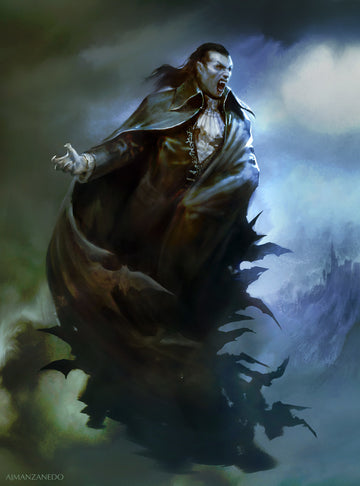


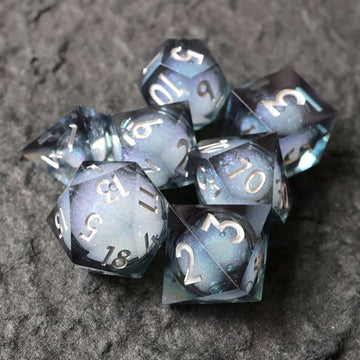
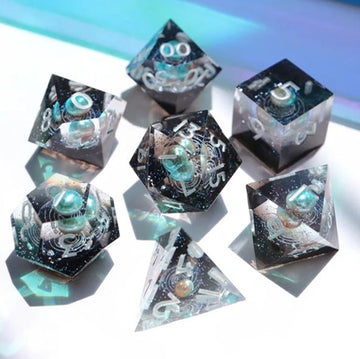
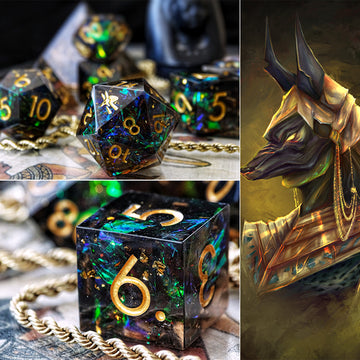
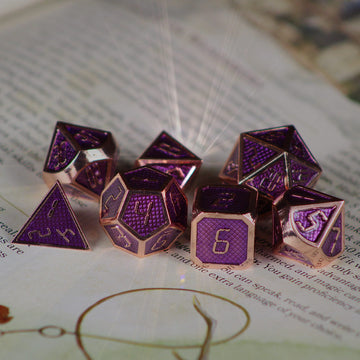
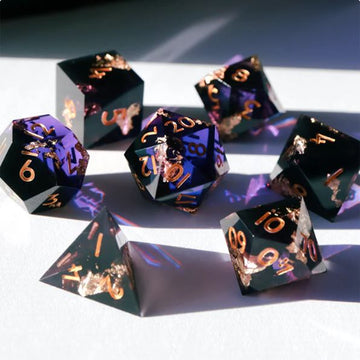
Vampires aren’t the only unholy beings believed to be incapable of touching and/or crossing running water. Although there is more than one reason why, the most predominant (that I could find, anyway) is the fact that running water IS holy water. The all natural version! Where stagnant water was likely to be full of diseases and harmful bacteria, running water was considered clean and safe. And also, you know, extremely vital to any community. Since vampires are distinctly the opposite—unholy, disease-ridden, harmful creatures—running water hurts them. Tossing a vampire into a babbling brook basically is the equivalent of tossing one into a vat of blessed holy water.